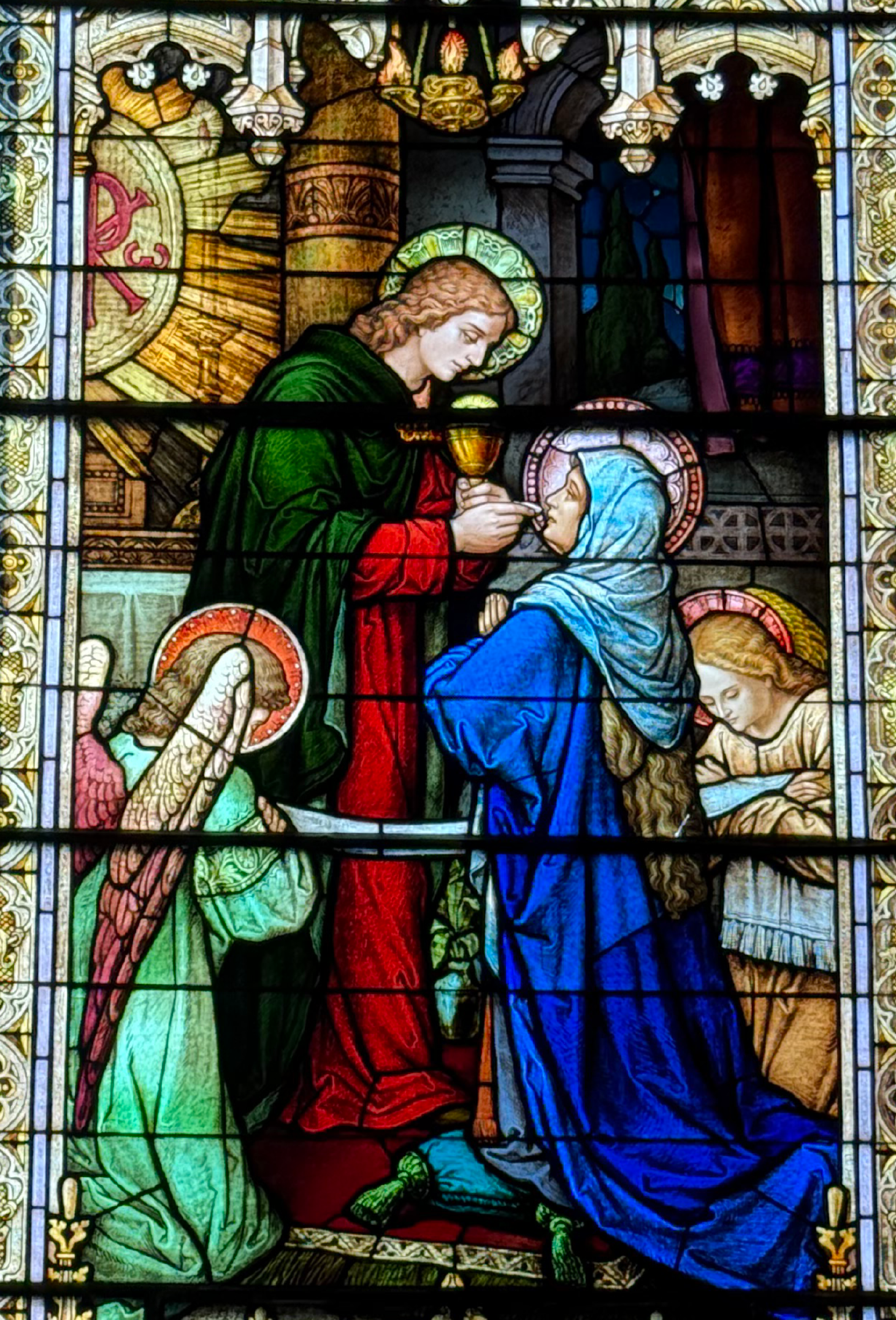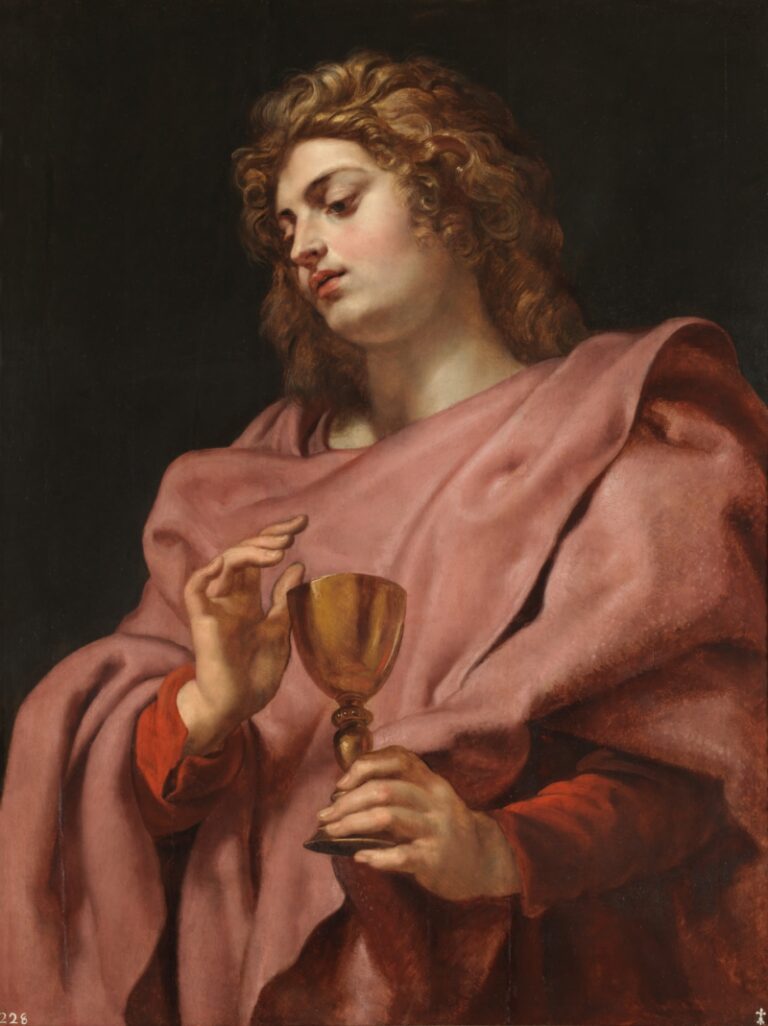
Mary receiving holy communion in Ephesus from the hands of St. John the Apostle, to whose care the dying Redeemer had commended her. In the window, angels are holding the houseling-cloth which ws held in front of the communicants to prevent the falling of the body and blood of Christ to the ground.

Presented by Jane Schneeberger Austin


St. John by Peter Paul Rubens (c.1611)
Introduction
This report explores the lives and contributions of two pivotal figures in Christian history: Mary, the mother of Jesus, and St. John the Apostle. Both are central characters in the New Testament and have deeply influenced Christian theology and tradition.
Mary, the Mother of Jesus
Background and Early Life
Mary, also known as the Virgin Mary, is revered in Christianity as the mother of Jesus Christ. According to Christian belief, she conceived Jesus miraculously through the Holy Spirit. Her story begins in the Gospels of Matthew and Luke, which describe her as a pious young woman from Nazareth, engaged to Joseph, a carpenter.
Role in the New Testament
Mary is present at several critical events in the life of Jesus, including his birth, where she plays a central role, and his crucifixion, where she witnesses his death. Her presence at the wedding at Cana, where Jesus performs his first miracle, and at various instances of Jesus' public ministry, highlights her continued importance in his life and mission.
Significance in Christianity
Mary is venerated in various Christian traditions. In Roman Catholicism, she is honored as the "Queen of Heaven" and the "Mother of God," and is celebrated through numerous feasts and devotions. The doctrine of the Immaculate Conception, which claims that Mary was free from original sin from the moment of her conception, further underlines her unique status in Catholic theology.
St. John the Apostle
Background and Early Life
St. John the Apostle was one of the original twelve apostles of Jesus. He is often identified as the "beloved disciple" in the Gospel of John, suggesting a close and special relationship with Jesus. John, the son of Zebedee and brother of James, was a fisherman by trade before being called by Jesus.
Contributions to the New Testament
St. John is traditionally credited as the author of the Gospel of John, three Epistles (letters), and the Book of Revelation. The Gospel of John differs significantly from the synoptic gospels (Matthew, Mark, and Luke) in its more theological approach to Jesus' life and teachings, emphasizing his divinity.
Role in Early Christianity
John’s influence extended beyond the New Testament. He is believed to have played a significant role in the early Christian church, particularly in Ephesus, where he is said to have lived in his later years. Tradition holds that John was the last of the apostles to die and was the only one to die a natural death, emphasizing his enduring impact on the nascent church.
Conclusion
Mary and St. John the Apostle are integral figures in Christian history and theology. Mary's role as the mother of Jesus and her veneration in various Christian traditions underscore her influence. In contrast, St. John the Apostle’s contributions to the New Testament and his leadership in the early church highlight his importance in the spread of Christianity. Their legacies continue to inspire and shape Christian thought and practice today.
References
-
The Holy Bible, New Revised Standard Version
-
"Mary in the New Testament" by Raymond E. Brown
-
"The Gospel According to John" by D. A. Carson
-
"John: The Gospel of Life" by Michael Card
